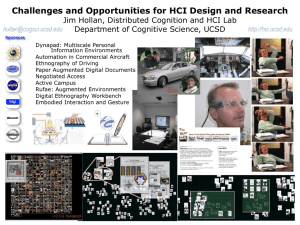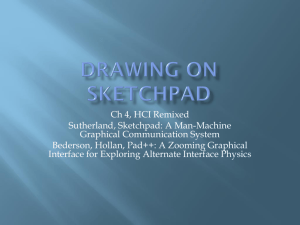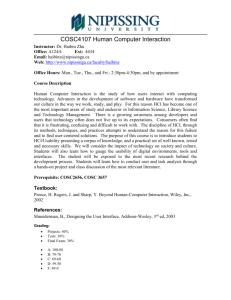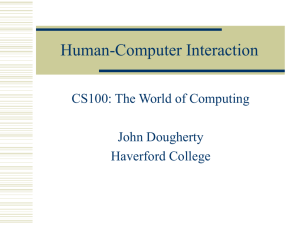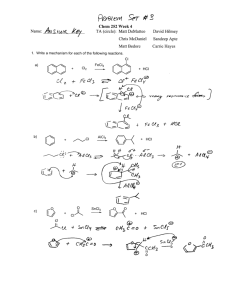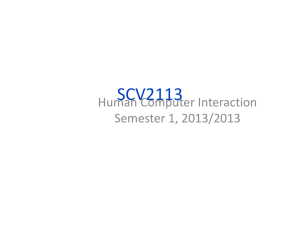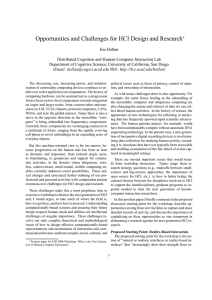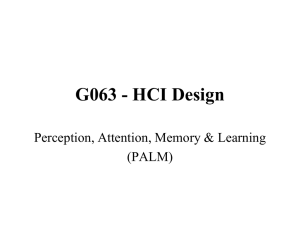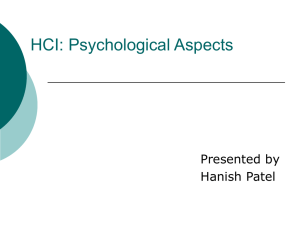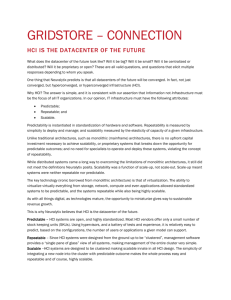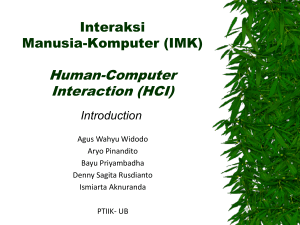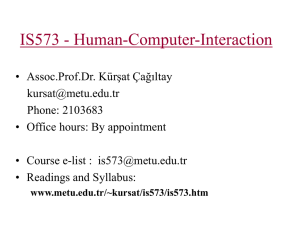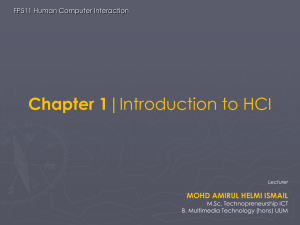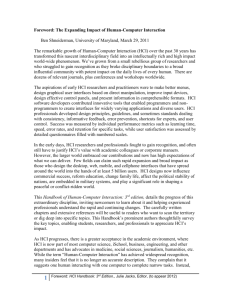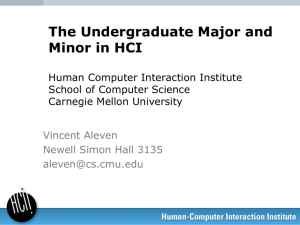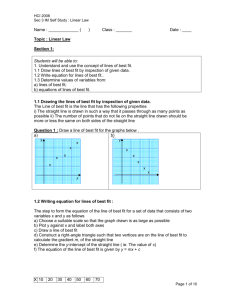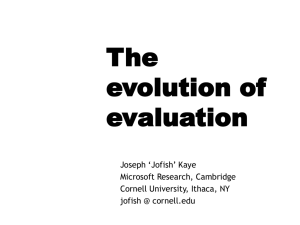Interactive Computer Graphics, Human Computer Interaction, Virtual
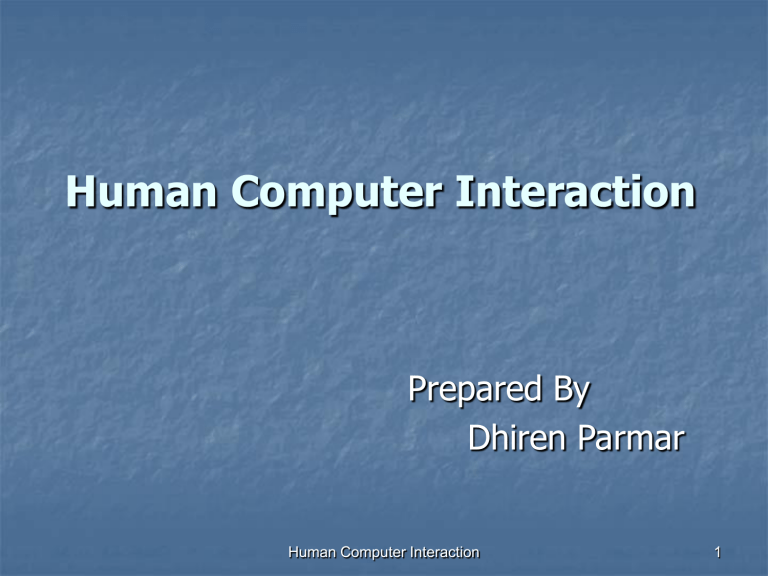
Human Computer Interaction
Prepared By
Dhiren Parmar
Human Computer Interaction 1
Outline
What is HCI
History
What is Human, Computer and Interaction
Goals
Cognition
User Interaction Design
Interaction Styles
Interaction Devices
Future
Conclusion
Human Computer Interaction 2
What is Human Computer
Interaction
“Human-computer interaction is a discipline concerned with the design, evaluation and implementation of interactive computing systems for human use and with the study of major phenomena surrounding them”
Human Computer Interaction 3
History
• 1945 – MEMEX by Vanevar Bush
• 1963 – SketchPad and Light Pen by Ivan Sutherland
• 1964 – Mouse by Douglas Engelbart
• 1973 – Alto by Xerox PARK
• 1983 – Apple Lisa
• 1987 – Windows
Human Computer Interaction 4
(Source – Georgia Tech HCI)
Human Computer Interaction 5
Human
Humans are limited in their capacity to process information.
This has important implications for Design
Information is received and responses given via a number of input and output channels:
• Visual Channel
• Auditory Channel
• Haptic Channel
• Movement
Information is stored in memory:
• Sensory Memory
• Working Memory
• Long-Term Memory
Human Computer Interaction 6
Computer
There is not much difference in Human and
Computer
Computer consist of
• Input Devices
• Output Devices
• Memory
• Processing
Computer can be Mobile, Spacecraft Cockpit,
Microwave Oven or VCRs etc.
Human Computer Interaction 7
Interaction
HCI is concerned with joint performance of Task by Human &
Computer
Communication between The User and The System
Physical Interaction
• Interaction Devices
Conceptual Interaction
• Interaction Styles
Human Computer Interaction 8
Goals
The main goal of HCI is Usability
“It is a measure of the effectiveness, efficiency and satisfaction with which specified user can achieve specified goals in a particular environment”
A usable System is:
• Easy to Learn
• Easy to Remember how to Use
• Effective to Use
• Efficient to Use
• Safe to Use
• Enjoyable To Use
Human Computer Interaction 9
Cognition
Cognition is the processing of information
It includes:
• Perception
• Attention
• Pattern Matching
• Memory
• Language Processing
• Decision Making
• Problem Solving
Human Computer Interaction 10
The Model Human Processor
The model human processor consists of three interacting systems. Each has its own memory and processor.
Perceptual processor
• Outputs into audio storage
• Outputs into visual storage
Cognitive processor
• Outputs into working memory.
• Has access to:
Working memory
Long term memory
Motor processor
• Carries out actions
Human Computer Interaction 11
Cognition Conti.
Human Information Processing
• Information Processing Capabilities
• Cognitive Requirement of Various Tasks
• Characterize the information processing of a user
Three Main Cognitive Challenges
• Conceptual Complexity
• Memory Load
• Attention
Distributed Cognition
Human Computer Interaction 12
User Interaction Design
• Data Collection
• Data Analysis
• User Modeling
• Design
• Prototyping
• Evaluation
Human Computer Interaction 13
(Re)Design
Identify needs/establish requirements
Evaluate
Build an interactive version
Human Computer Interaction
Final product
14
Interaction Styles
• Command Line Interface
• Menus
• Question & Answer Dialogue
• Form-Fill Interface
• WIMP
• Direct Manipulation
• Natural Language
Human Computer Interaction 15
Interaction Devices
Input Devices
• Keyboards
• Mouse, Trackballs, Touch Pads
• Touch Screens
• Speech Input
• 3D trackers, 3D Mouse
Output Devices
• Screens
• Printers
• Sound Output
Human Computer Interaction 16
Future
• Artificial Intelligent
• Virtual Reality
• New Interface Devices
Human Computer Interaction 17
(Source - Input Output Devices, UCL)
Human Computer Interaction 18
Conclusion
Human Computer Interaction 19
References
1. A brief history of Human Computer Interaction Technology,
Brad A. Myers
2. Introduction to HCI, Matthias Rauterberg
3. Human Computer Interaction, Keith Andrews
4. Human Computer Interaction, 2 nd Edition, Alan Dix
5. Cognitive Architectures and HCI, Wayne D. Gary, Richard M.
Young
6. Usability Design, Jan Gulliksen
7. Future of HCI, Michael H. Coen
8. HCI, Nicky Danino
Human Computer Interaction 20
Thank You
Human Computer Interaction 21
